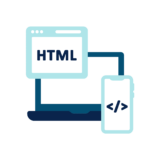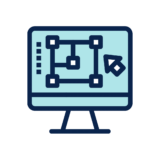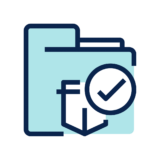Application Security

OF APPLICATIONS HAD AT LEAST ONE SECURITY FLAW
OF APPLICATIONS HAD AT LEAST ONE SECURITY FLAW
OF APPLICATIONS HAD AT LEAST ONE SECURITY FLAW
Sources: Govtech.com, Gartner, hcltechsw.com
ON-GOING MANAGEMENT SUPPORT

Code Level Checking

Database Optimization

Server Performance Maintenance

Performance Monitoring
Challenges of Application Security
Learn about the common challenges like integrating security into the dev cycle, lack of expertise, prioritizing vulnerabilities and more.
Code Injections
Using code injection techniques, attackers can exploit vulnerabilities in a web application by inserting their malicious code. Code injection is listed first in OWASP Top 10 Application Security Risks
Malware Infections
While email spam continues to be the primary vector of malware attacks, malware can be delivered from free downloads, phishing websites, USB storage.
DDOS Attacks
Targeted volume-based attacks designed to overwhelm the system, rendering it unable to function.
Data Breaches
Some of the common causes of data breaches include misconfiguration, lost hardware, malware infection, and compromised credentials. In order to avoid data breaches, a wide range of web application security best practices are required.
Malicious Insiders
An attack based on misuse of legitimate credentials from someone familiar with the security policies, procedures and vulnerability of an organization in order to steal information.
Back-Up/Disaster Recovery
Provides comprehensive back-up and recovery of Microsoft 365, Gmail, Google Drives, Shared Drives, Calendar and Contact with flexible restore options.
Application vulnerability scanning
Security misconfigurations within the platform, web server, application server, database, framework and custom code.
Single-page applications (SPAs), script-heavy sites, applications built with HTML5 and JavaScript, and password-protected areas.
OWASP Top 10, CORS, Amazon S3 Bucket

SECURE CODE REVIEW
Ensures compliance and regulatory requirements are met

Legacy Application modernization

FAQ
Application Security involves measures taken to secure software and applications from potential threats and vulnerabilities. It’s important because applications often serve as entry points for attackers, and securing them helps prevent data breaches, unauthorized access, and other cyber threats.
Common vulnerabilities include:
- Injection flaws (such as SQL injection and code injection)
- Cross-Site Scripting (XSS
- Insecure direct object references
- Security misconfigurations
- Inadequate authentication and session management
- Poor input validation
- Insecure deserialization
Developers can improve Application Security by:
- Using secure coding practices and frameworks
- Conducting regular security testing and code reviews
- Implementing input validation and proper output encoding
- Integrating security into the software development life cycle (SDLC)
- Following the principle of least privilege when granting permissions
Security testing, including penetration testing and vulnerability assessments, helps identify and rectify security weaknesses in applications. Code reviews involve systematically examining code to find and fix security issues, ensuring the implementation of secure coding standards and practices.
Post-deployment, organizations can maintain Application Security by:
- Regularly updating and patching applications to fix known vulnerabilities
- Implementing strong authentication and access controls
- Monitoring applications for unusual activities or potential security breaches
- Employing web application firewalls (WAFs) and runtime application self-protection (RASP) for added protection
- Providing ongoing security training to all involved personnel






